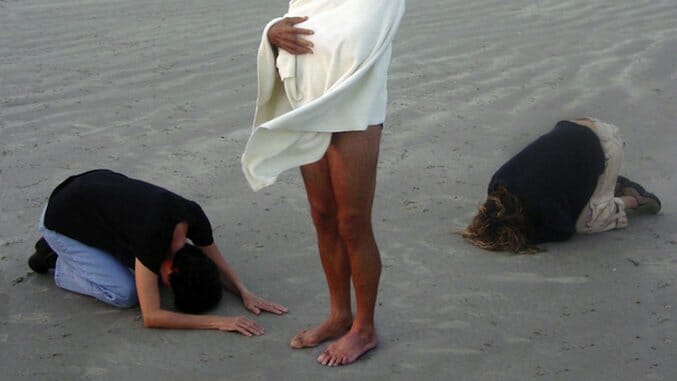Holy Hell

A documentary that’s equal parts memoir and exposé, Holy Hell focuses on the Buddhafield, a mysterious spiritual group—aka cult—that blossomed in West Hollywood, Calif., and later in Austin, Texas, in the 1980s and ’90s. When the film was first announced as part of this year’s Sundance lineup, the director’s name was kept a secret. Filmmaker Will Allen later said in an interview with Variety that the anonymity helped him finish Holy Hell without interference (and probably didn’t hurt the film’s mystique, either).
The film begins as Allen’s story: A young film school graduate in 1985 finds himself lost among the yuppies of the Reagan era. In voiceover that accompanies family pictures, home movies and archival film clips of Buddhafield members alternating between states of agony and ecstasy, he says, “This is what happened to me on my 22-year search for the truth.” But as Allen and many of his fellow members learn throughout their respective journeys, the truth is often elusive.
Allen served as the Buddhafield’s de facto in-house videographer, capturing the group’s activities over the course of two decades. His inner-circle standing provides access to its leader Michel, the Teacher. The South American transplant is a ballet-loving guru who prefers going shirtless and wearing Ray-Bans and Speedos to the long-flowing robes favored by other cult leaders, such as Father Yod of the Source Family (another Hollywood fringe group that flourished in the 1970s and the subject of a chilling documentary by Jodi Wille and Maria Demopoulos).
In crafting his first feature, Allen intersperses insider footage with more recent interviews with former members. We learn little from them about Michel, whose real name is Jaime Gomez, other than he was a failed actor/dancer/performer who dabbled in gay porn and had a brief cameo in Roman Polanski’s Rosemary’s Baby. The Buddhafield’s doctrines were also a bit nebulous, with Michel practicing hypnosis and Shakti, espousing healthy eating, fitness, a clean lifestyle—and no sex. It’s telling that during its height of popularity—a relative term since the Buddhafield had about 150 members at its apex—no babies were born to any of the young, good-looking and physically fit members.
-

-

-

-

-

-

-

-

-

-

-

-

-

-

-

-

-

-

-

-

-

-

-

-

-

-

-

-

-

-

-

-

-

-

-

-

-

-

-

-








































